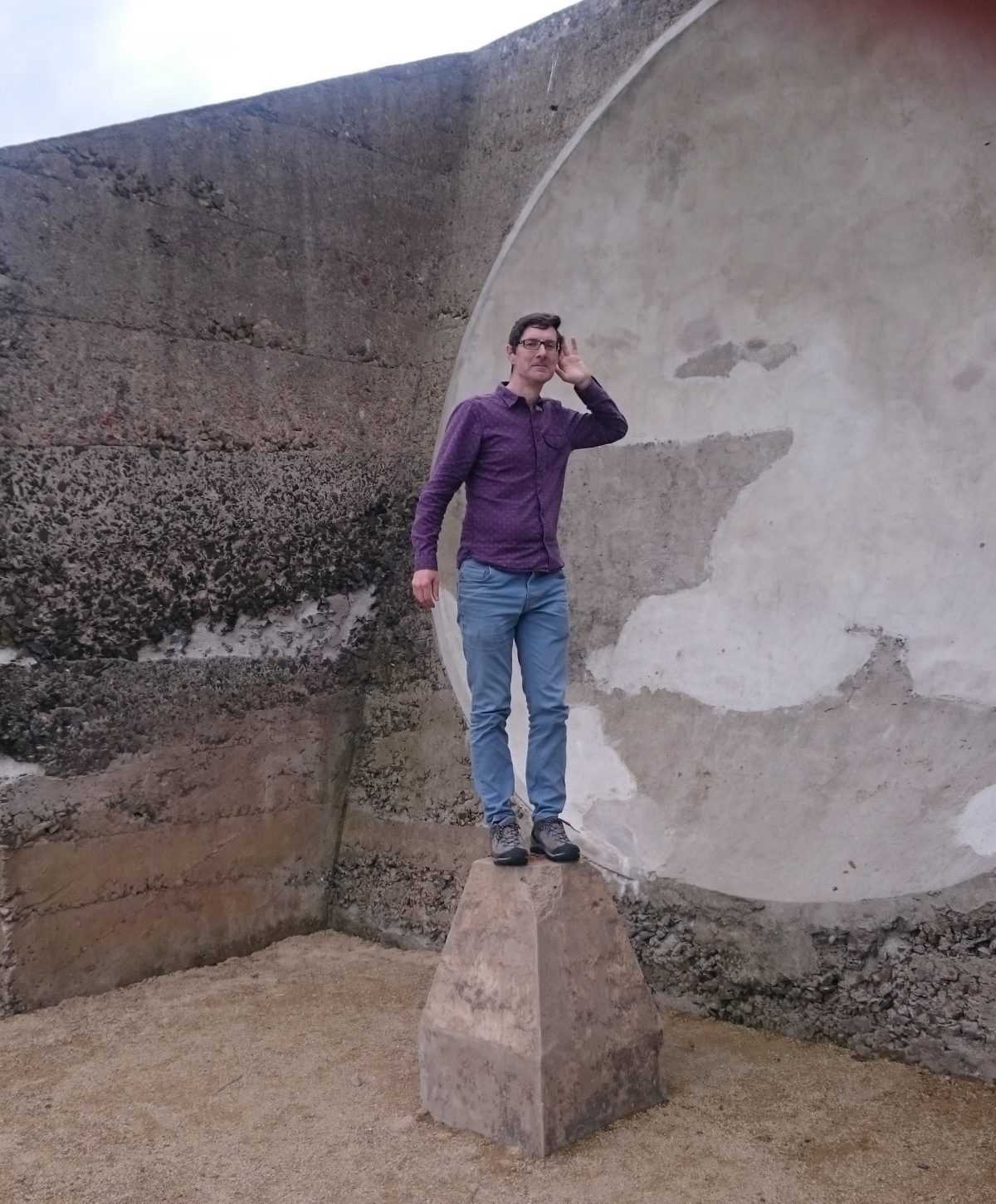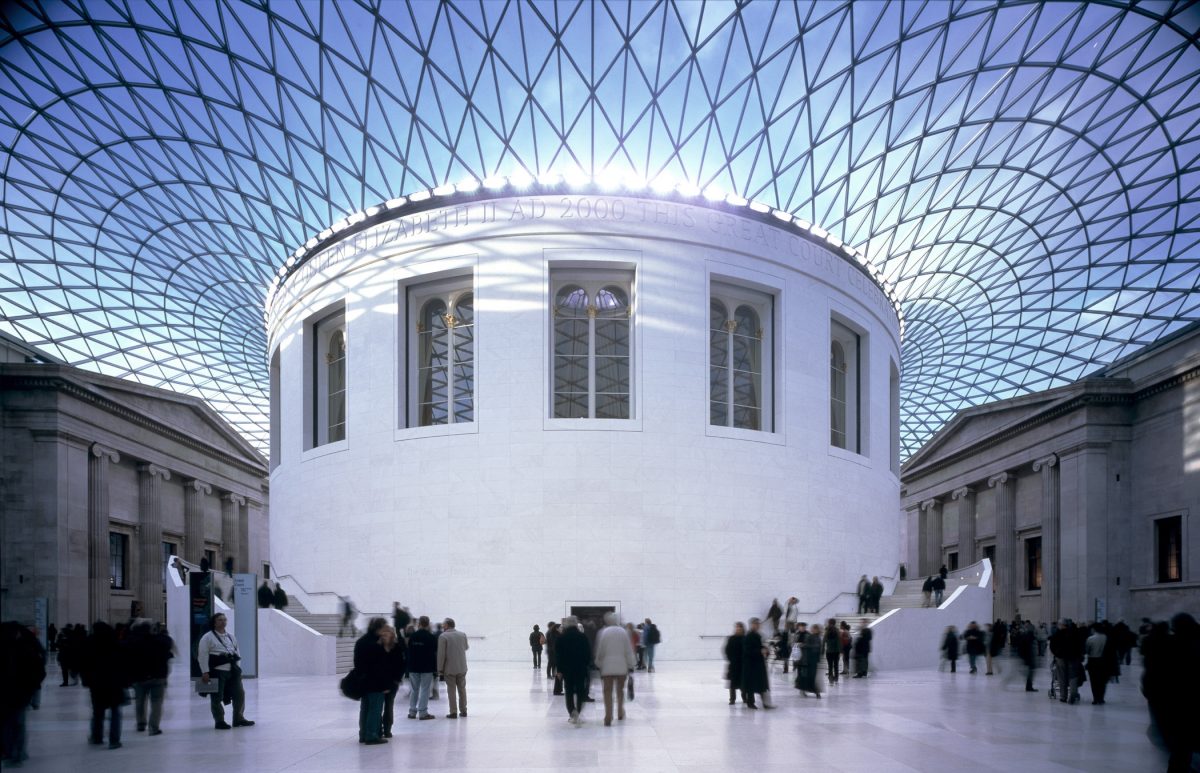These amazing structures are sound mirrors. Concrete concave dishes designed to capture the sound of incoming enemy aircraft as they flew over the north sea and the channel towards England. Acting on sound like a concave shaving mirror focusses light, the sound from the aircraft is concentrated to a point where a microphone picks up the sound. The largest structures allowed aircraft to be detected 6.5 miles away, as well as determing the direction of attack to an accuracy of 1.5 degrees [4]. Overall they were not terribly effective, however, and became obsolete and abandoned when RADAR was invented.
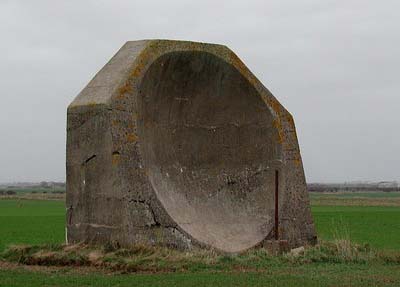
At Kilnsea, Yorkshire, UK the mirror is about 4.5m high. It was used in World War I to try and pick up the engine noise from Zeplin aircraft. This gave 3-4 minutes of extra warning before attack [2]. Zeppelins raided the North East of England fifteen times between 1915 and 1917.
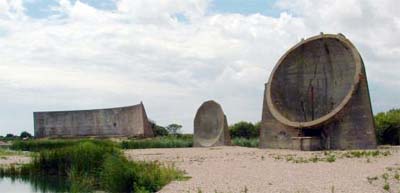
At Denge, Kent, UK there are three mirrors. The various acoustic mirrors were constructed in the 1920s & 1930s. The different designs are evidence of experimentation to discover which shape and size worked best. There are a 6m concrete concave mirror, a 9m hemispherical bowl and a curved 60m long mirror.
Logistics
Easy to visit
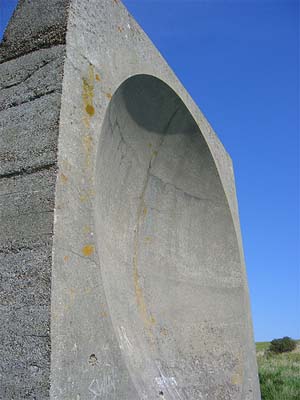
1. Abbot’s Cliff, Kent, UK: grid reference TR27083867. A ten minute walk from the Folkestone – Dover road along a tarmac path [5].
![Sound mirror at Hythe [6]](http://www.sonicwonders.org/images/sound mirror hythe.jpg)
2. The Roughs near Hythe, Kent, UK are on MoD property but several websites say the dishes can be visited. The picture is of a 9m mirror, a smaller 6m mirror lies nearby on its face [5].
3. The Redcar sound mirror is in a modern housing estate at the junction of Holyhead Drive and Greenstones Road.
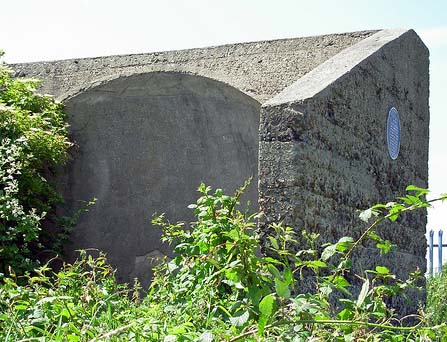
4. In Sunderland alongside a bridleway about 200 metres west off the Newcastle Road, Fulwell.
On private land and probably only viewable from a distance
1. Boulby, Yorkshire, UK: West of Boulby Barns Cottage on Boulby Bank. On private land, although the rear of the mirror is visible from a nearby minor road [5].
2. Kilnsea, Yorkshire, UK: Not far from a road but on private land.
3. Il Widna (“The Ear”), Malta: On private land but can be seen from a distance through a fence [5]. Large curved strip mirror similar to the large device at Denge.
Accessible only on a guided tour
Denge, near Dungeness, Kent, UK. These are not accessible to the public except via guided walks by. [5]
Sources & Links
Website dedicated to sound mirrors
[1] Photo Paul Glazzard, Creative Commons Attribution-ShareAlike 2.0 license.
[2] http://www.bbc.co.uk/humber/content/articles/2008/10/15/kilnseaabandoned_feature.shtml
[3] Photo Paul Russon, Creative Commons Attribution-ShareAlike 2.0 license.
[4] http://www.southdown-amateur-radio-society.org.uk/HTML/Soundmirrors.html
[5] http://www.andrewgrantham.co.uk/soundmirrors/
[6] Abbot’s Cliff and Hythe photos Between a Rock, Creative Commons Attribution License.
[7] Redcarr photo © Copyright Mick Garratt and licensed for reuse under this Creative Commons Licence.
[8] Sunderland sound mirror photo, Phil Thirkell, Creative Commons License Attribution-Non-Commercial 2.0 Generic.
